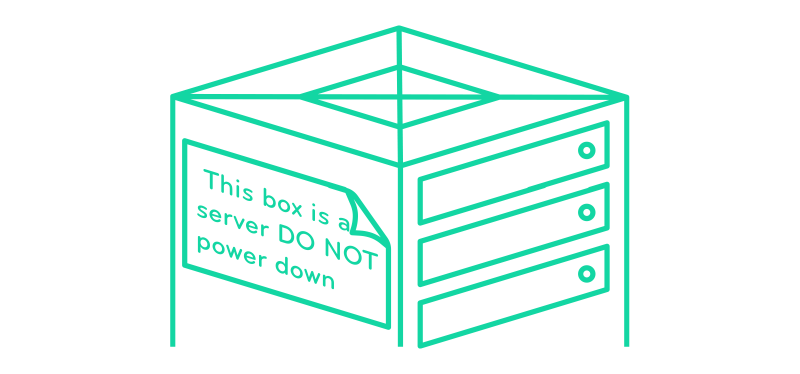‘Cloud Native’ is the latest branded wave of technical advancement
- How do I know it’s here?
- Increase in new marketing jargon and buzzwords.
- New unfounded claims that X is a product you can just buy.
- Developers/engineers resume titles morphing from Y to X.
- Why do others want it?
- Like with other waves this will depend on how dependent your business is on technology.
- With each wave, you can unlock new capabilities for your teams and open up wider options for your business.
- Do I need it?
- Not always.
- For some, digitising your company’s needs is enough.
- For other companies, ‘moving to’ the cloud is enough.
So what is Cloud Native?
Cloud Native Computing Foundation defines Cloud Native as follows:
Cloud native technologies empower organisations to build and run scalable applications in modern, dynamic environments such as public, private, and hybrid clouds. Containers, service meshes, microservices, immutable infrastructure, and declarative APIs exemplify this approach.
These techniques enable loosely coupled systems that are resilient, manageable, and observable. Combined with robust automation, they allow engineers to make high-impact changes frequently and predictably with minimal toil.
These key words mention technical concepts and attributes which are associated with a cloud native solution, but are not the solution in isolation. Instead they are tools or operational goals that can be used on the road to your solution.
The problems with ‘moving to’ digital…
Are the same problems we have with ‘moving to’ the Cloud.
When we ‘moved to’ Digital we simply digitised existing processes and products, we did not adapt and leverage digital advantages. For example, in the media world…
- We used to:
- Have a physical copy of a tape.
- Take the physical copy to a department’s ‘in’ tray.
- When the department finished they moved it to the ‘out’ tray.
- We deliver to the next department, etc.
- We could have:
- Taken these files and stored them in a scalable data store.
- Put a simple service in front which can be adapted to the different needs of those accessing the files.
- We didn’t because:
- The non-technical challenges are generally bigger than the technical ones.
- We would have to change the people, processes, team structures, reporting structures, etc.
The problems with ‘moving to the cloud’…
Also involved simply moving existing processes and not leveraging Cloud advantages.
- Lifting and shifting existing apps from a private VM to a public VM:
- This meant your hardware issues became the cloud provider’s hardware issues.
- Migrating to a SaaS offering such as Amazon Transcribe:
- This meant your hardware issues became the cloud provider’s hardware issues AND…
- …Your service problems became the cloud provider’s service problems.
- But… I still have problems:
- The sudden increase in speed of creating infrastructure and other benefits Cloud brought were easily noticeable BUT…
- …Now there is suddenly a new system that needs extra security considerations, new costs associated and adequate resources and commitments given to it.
So what makes up ‘Cloud Native’?

What is Cloud Native?
Deciding to embrace the advantages that cloud technologies bring
It’s very unlikely you will succeed without this. This is a top-down decision, very difficult to effect change from the bottom up.

What is Cloud Native?
Accepting all layers of your stack are open for business
This is not just an infrastructure challenge, this is an application, team and process challenge.

What is Cloud Native?
Removing the fear of technical change
Instead of letting your technology dictate your plan, let your plan dictate the technology.

What is Cloud Native?
Pivoting from static to dynamic solutions
Just because you’re in the Cloud, it doesn’t mean your solution is dynamic. We are no longer interested in treating servers like pets but instead as cattle which dynamically change.

What is Cloud Native?
Understanding the value of the open source ecosystem
Flexibility to bend technology to your requirements rather than compromise your solution for the technologies’ needs. Reducing the risk of being locked into an ecosystem which does not conform to your cloud native strategy.

What is Cloud Native?
Supporting your business / team as it explores, adopts and adapts
This is not a ‘one size fits all’ – it is an experience unique to your company.
This is Cloud Native…
The next branded wave of technical advancement.
Deciding your business will embrace the advantages that cloud and cloud aligned technologies bring.
Removing the fear of technical change.
Accepting all layers of your stack are open for business.
Pivoting from static to dynamic solutions.
Understanding the value of the open source ecosystem.
Supporting your business as it explores, adopts and adapts.
Download this whitepaper
Thank you for reading
Do you need help with Cloud Native technology? Get in touch and let's work together.
- Quick response
- Free consultation
